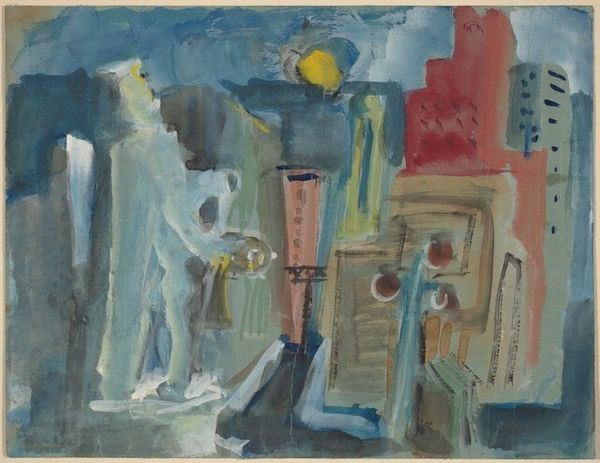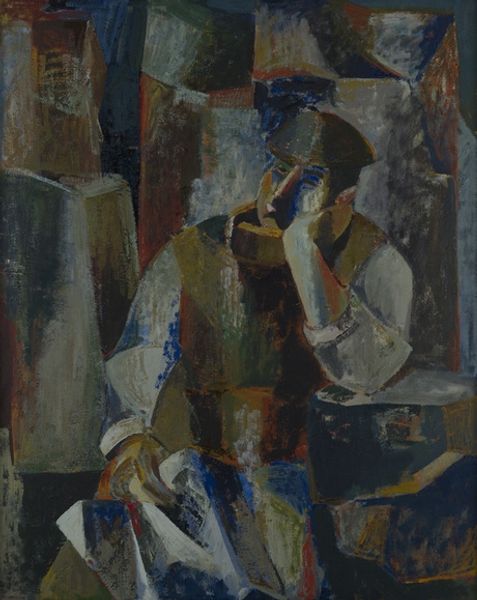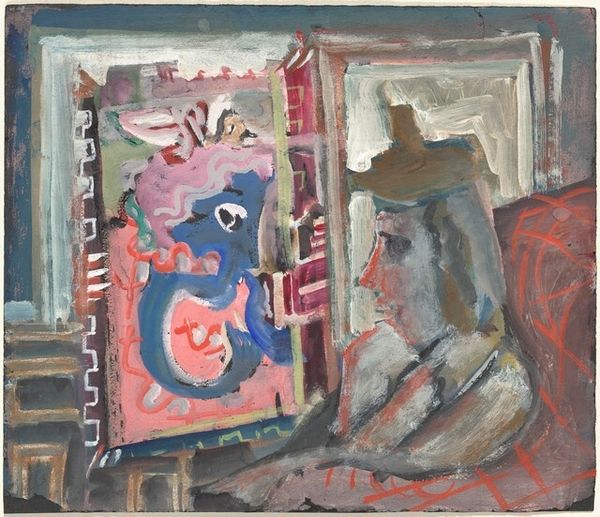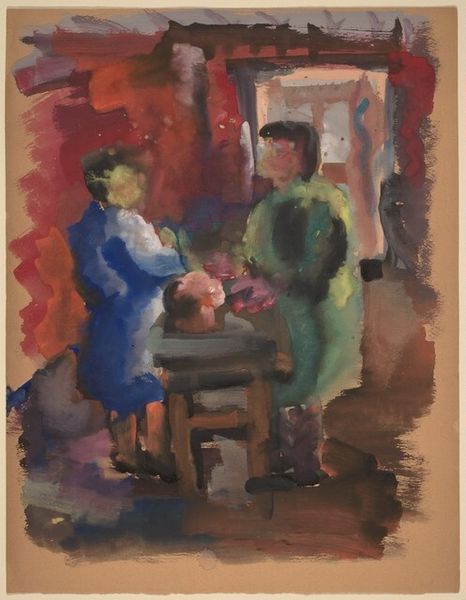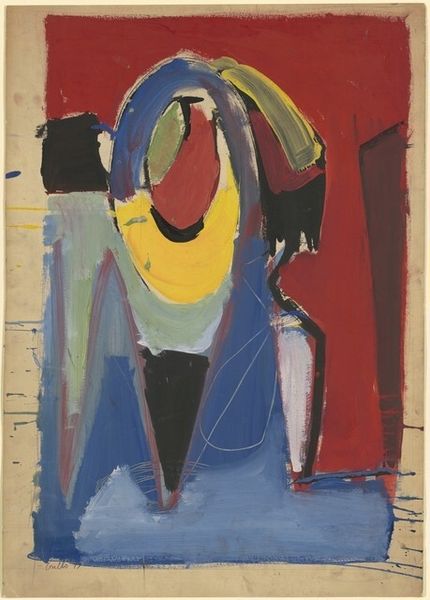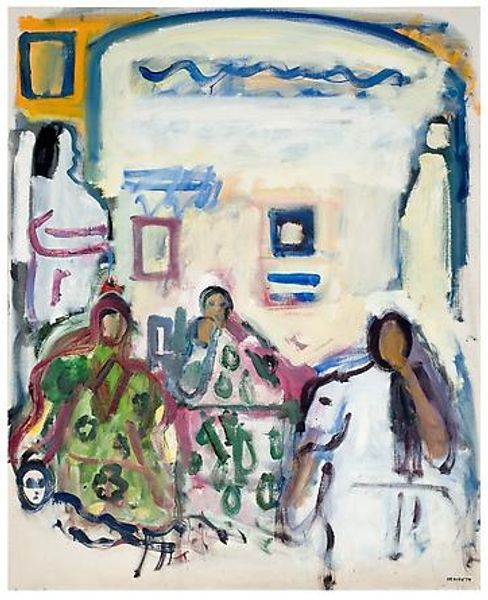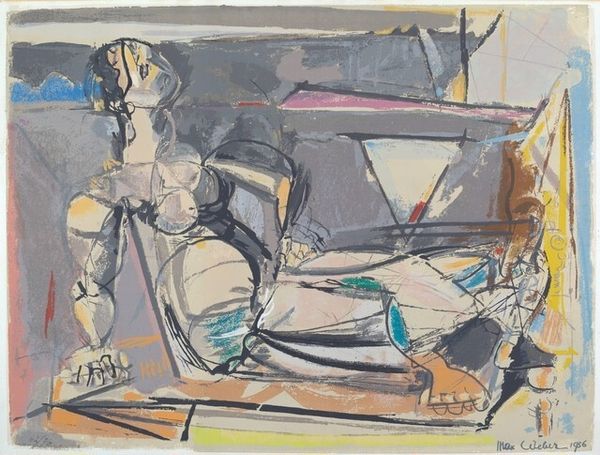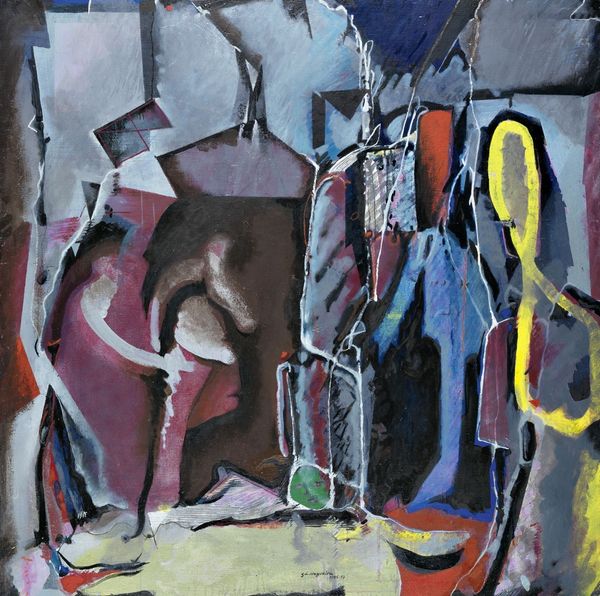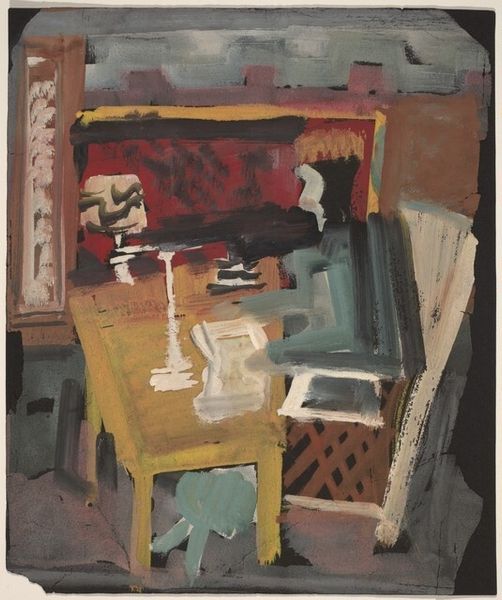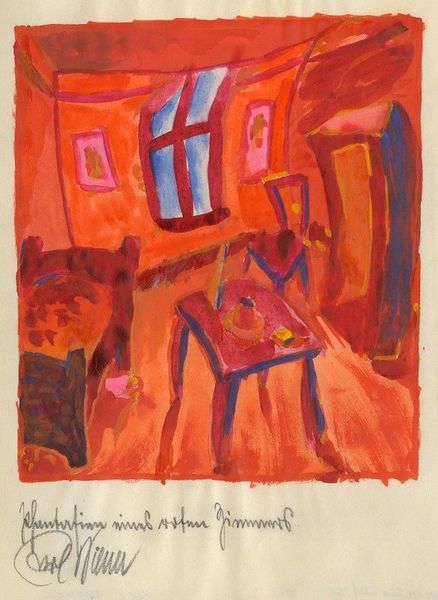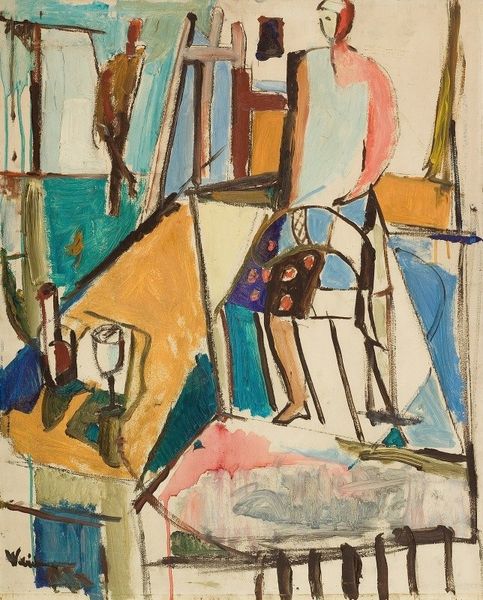
drawing
#
drawing
#
water colours
#
handmade artwork painting
#
oil painting
#
acrylic on canvas
#
underpainting
#
painting painterly
#
painting art
#
watercolour bleed
#
watercolour illustration
#
watercolor
Dimensions: overall: 30.5 x 20.3 cm (12 x 8 in.)
Copyright: National Gallery of Art: CC0 1.0
Editor: This watercolor drawing, "Two Figures Seated at a Red Table" by Mark Rothko, has an almost childlike quality to it with its simplified forms and pastel-leaning palette. I’m struck by how these figures seem so isolated, even while sharing the same space. What do you see in this piece, looking at it from a symbolic perspective? Curator: Well, the table immediately draws my attention. Its fiery red contrasts so vividly with the cooler tones of the room and the figures, doesn't it? Consider how red can represent passion, energy, or even danger. What do you think it signifies here, in this seemingly quiet scene? Editor: I hadn’t thought of danger. I was leaning more towards vibrancy, perhaps as a counterpoint to their isolation? Curator: Perhaps both. But let’s delve deeper. Notice the shapes and patterns: the ambiguous emblem on the table and the wave-like decorations behind the figures. Rothko is not merely representing a scene; he’s creating an atmosphere steeped in symbolic imagery. What emotional resonance do these shapes evoke for you? Do they stir up any associations? Editor: They're almost unsettling. The 'window' design behind the table seems restrictive and the figures seem enclosed and detached. Do you think that the lack of distinct facial features contributes to the overall feeling of alienation? Curator: Absolutely. The absence of facial details transforms the figures into archetypes, their emotions suggested rather than defined. Consider how Rothko might be commenting on the shared, yet intensely personal, experiences of modern life. Are they two souls coexisting, or merely existing near each other? It poses profound questions about human connection and disconnect, don't you agree? Editor: It’s really interesting to consider the figures as symbols themselves. This has given me a whole new framework for interpreting Rothko's earlier work. Curator: Precisely. Rothko's early figurative work contains, even at this stage, the genesis of his later abstractions, always pointing to deeper, archetypal understandings of the human condition through symbolic visual means.
Comments
No comments
Be the first to comment and join the conversation on the ultimate creative platform.
